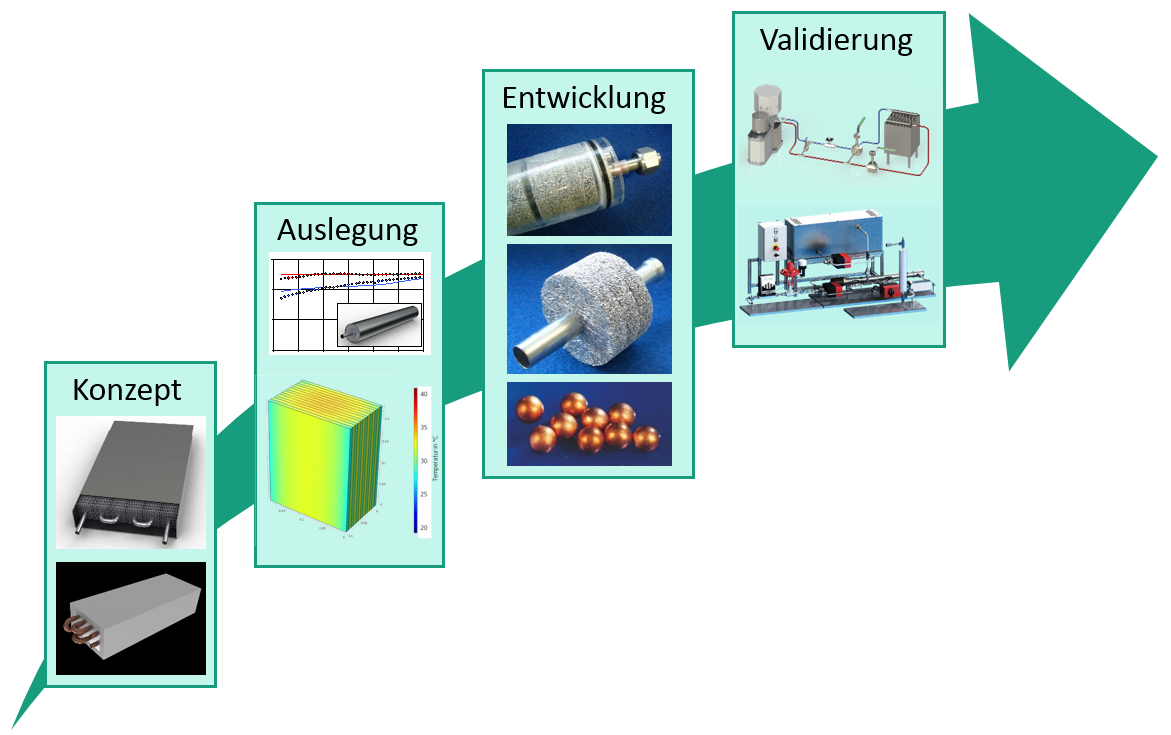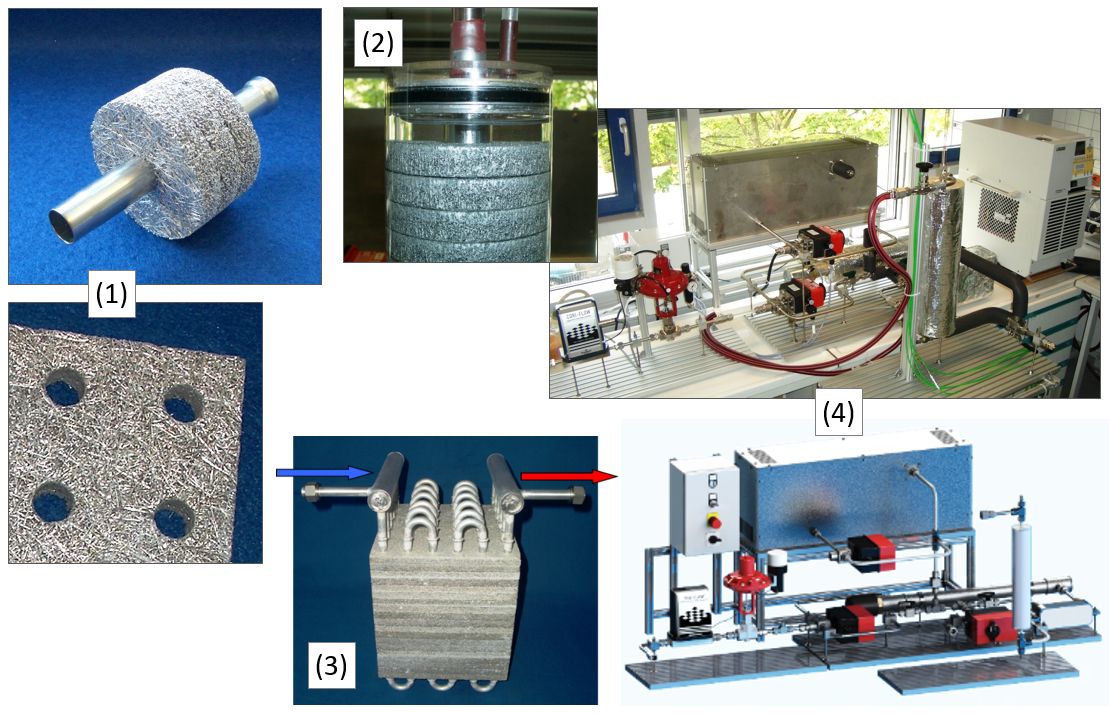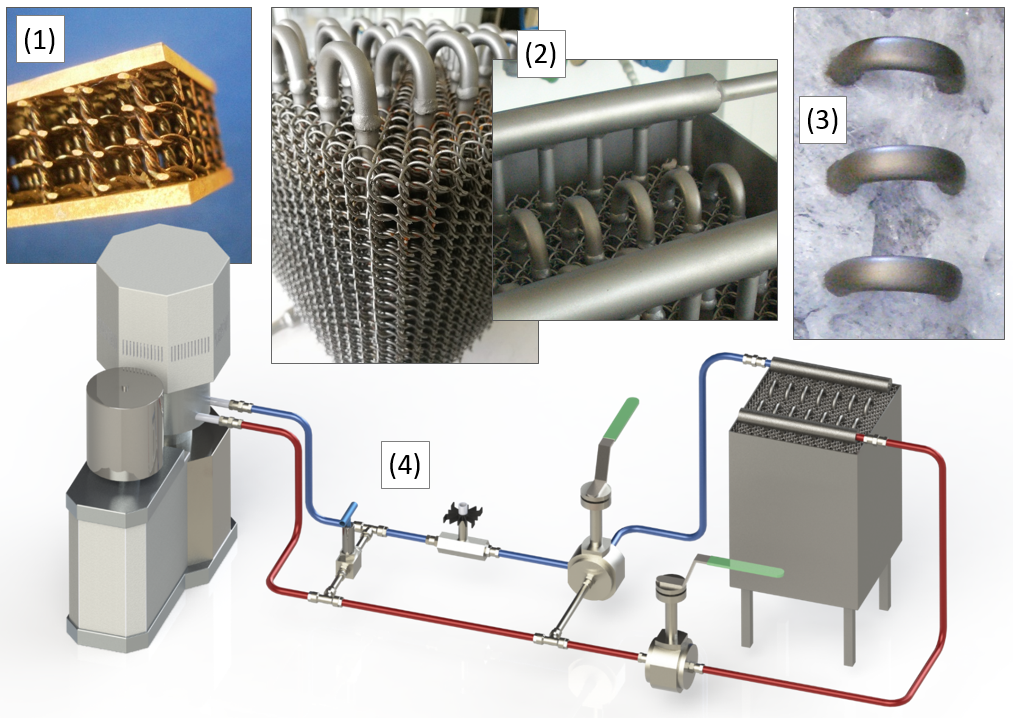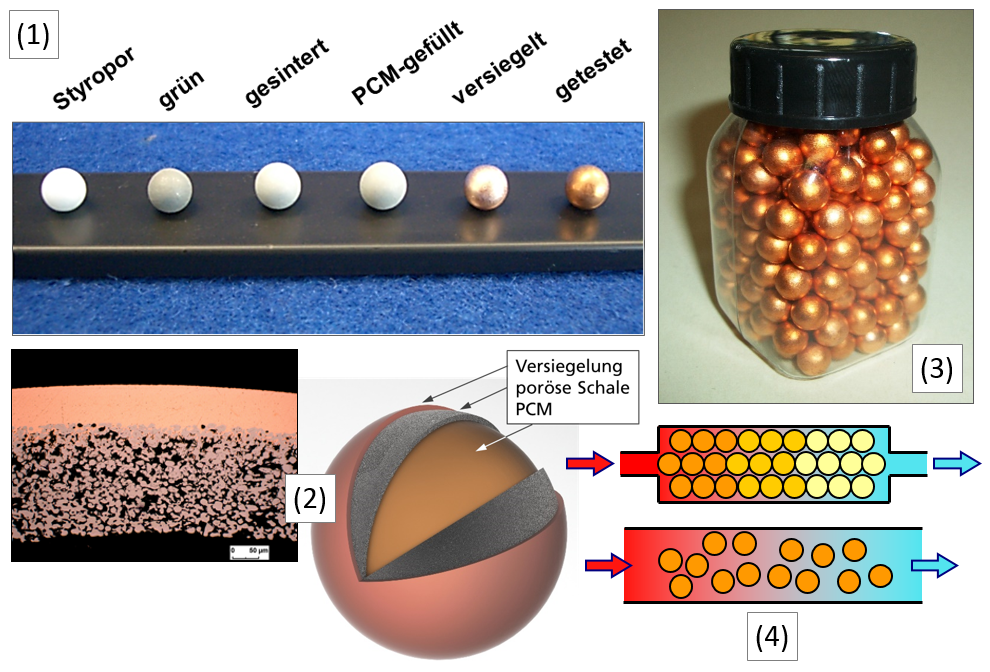Motivation and Business Activities
Thermal energy storage systems (heat/cold storage) with high performance are gaining more and more importance, especially for increasing the efficiency of cyclical thermal processes. At Fraunhofer IFAM Dresden, intensive research is carried out in the field of latent and sorptive heat storage systems.
Latent heat accumulators utilize the fusion heat of a Phase Change Material (PCM) and thus store heat with a high storage density at moderate costs and almost constant temperature. Sorptive heat accumulators use the binding heat of an adsorption or a chemical reaction (thermochemical accumulators).
Our Energy and Thermal Management business area offers many years of expertise along the entire development chain of innovative thermal storage technologies using in-house material know-how (e.g. cellular metals):
- Concept – Before any storage development, it is important to analyze the thermal system in which the storage is to be integrated. Then suitable technological approaches can be selected.
- Design – In order to minimize development costs, a wide range of mathematical simulations are carried out to coordinate the storage parameters and system boundary conditions, and to derive specifications for material development.
- Development –
Together with our in-house materials scientists, for example, metal-PCM composite materials are developed and characterized in the thermo-technical laboratory, joining technologies are optimized and prototype storage elements are manufactured. - Validation – As a final step, the experimental validation of prototypical storage devices in our laboratory and the upscaling to the application is performed.
 Fraunhofer Institute for Manufacturing Technology and Advanced Materials IFAM
Fraunhofer Institute for Manufacturing Technology and Advanced Materials IFAM


